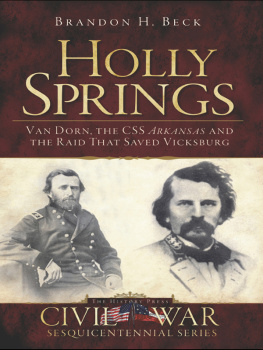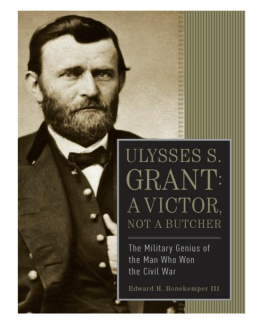Published in the United States of America and Great Britain in 2011 by
CASEMATE
908 Darby Road, Havertown, PA 19083
and
17 Cheap Street, Newbury, Berkshire, RG14 5DD
Copyright 2011 Kevin J. Dougherty
ISBN 978-1-61200-003-9
Digital Edition: 978-1-61200-014-5
Cataloging-in-publication data is available from the Library of Congress and the British Library.
All rights reserved. No part of this book may be reproduced or transmitted in any form or by any means, electronic or mechanical including photocopying, recording or by any information storage and retrieval system, without permission from the Publisher in writing.
10 9 8 7 6 5 4 3 2 1
Printed and bound in the United States of America.
For a complete list of Casemate titles please contact:
CASEMATE PUBLISHERS (US)
Telephone (610) 853-9131, Fax (610) 853-9146
E-mail: casemate@casematepublishing.com
CASEMATE PUBLISHERS (UK)
Telephone (01635) 231091, Fax (01635) 41619
E-mail: casemate-uk@casematepublishing.co.uk
Introduction
L ONG RELEGATED TO A SECONDARY POSITION BEHIND G ETTYSBURG , Vicksburg has more recently earned consideration by many historians as the truly decisive battle of the Civil War. Indeed, Vicksburg is fascinating on many levels. The Federal campaign of maneuver that isolated the Confederates in the city was masterful. The Navys contribution to the Federal victory was significant. The science of the fortifications and siege tactics are rich in detail. The human drama of Vicksburgs beleaguered civilian population is compelling. But perhaps more than any other factor, the key to the Federal victory at Vicksburg was simply better leadership. It is this aspect of the campaign that Leadership Lessons from the Vicksburg Campaign endeavors to explore.
The outcome of several Civil War battles can be easily explained by one sides superior leadership over the other. In the Shenandoah Valley, Major General Thomas Stonewall Jackson overcame a tremendous disparity in troop strength by outgeneraling a motley assortment of Federal commanders. At Chancellorsville, Major General Joseph Hooker lost his nerve in the face of General Robert E. Lees audacious leadership. At Gettysburg, Colonel Joshua Chamberlain saved Little Round Top for the Federals by his strong leadership in crisis. In an opposite way, Major General William Rosecrans abandoned hope and fled the battlefield at Chickamauga in his moment of crisis. In the subject of this study, Vicksburg was decided as much if not more by the leadership differential between Major General Ulysses Grant and Lieutenant General John Pemberton as it was by the troops they led.
Grants genius lay not in tactics so much as it did at the operational and strategic levels of war. He was able to conceptualize and to place events in a larger context. He understood the big picture and was able to articulate his intent to a team of competent subordinates and fellow commanders with whom he built an environment of cooperation and shared purpose. Vicksburg was a leadership triumph for Grant.
Pemberton, on the other hand, was more of a technician who was most comfortable dealing with known quantities in a sequential way. When faced with an ambiguous and uncertain situation, Pemberton became paralyzed. His impersonal and bureaucratic approach to leadership distanced him from his subordinates, who responded by being suspicious, uncooperative, and sometimes even hostile. Pemberton was a good man, but he found himself beyond his capabilities at Vicksburg. For him, the campaign was a leadership failure.
If Pemberton was going to be successful at Vicksburg, he would need clear guidance and support from President Jefferson Davis and nominal theater commander General Joseph Johnson. Both these leaders failed to provide Pemberton the direction he needed, thus the Confederate leadership failure at Vicksburg was not limited to Pemberton.
On the other hand, Grant benefited from strong senior leadership. General Winfield Scott had provided the Federals with a proper appreciation of the importance of the Mississippi River with his Anaconda Plan at the beginning of the war, and President Abraham Lincoln trusted, supported, and understood Grant. The Federal command hierarchy enjoyed the synergy and unity that the Confederates lacked.
Leadership Lessons from the Vicksburg Campaign explores the Vicksburg Campaign through this lens of leadership. Part One of the book is called Understanding Vicksburg. It contains sections on Leadership During the Civil War and a Campaign Overview. The first section familiarizes the reader with the challenges, characteristics, and styles associated with leadership during the Civil War in general. The second section outlines the Vicksburg Campaign by explaining the strategic significance of the Mississippi River and Vicksburg, detailing the opposing forces and the terrain, discussing the failed attempts to capture Vicksburg over the winter of 18621863, tracing the brilliant campaign of maneuver and logistics that allowed Grant to ultimately lay siege to the city, and concluding with the significance of the Federal victory. Part Two of the book consists of thirty Leadership Vignettes that span the actions of the most senior leaders down to those of individual soldiers. Each vignette focuses the Campaign Overview to the specific situation in order to provide the appropriate context, explains the action in the terms of leadership lessons learned, and concludes with a short, bulletized list of take-aways to crystallize the lessons for the reader. The section ends with a set of Conclusions about Leadership during the Vicksburg Campaign. The book also includes a campaign order of battle as an appendix and a comprehensive bibliography.
Leadership Lessons from the Vicksburg Campaign is intended to appeal to a variety of readers. Civil War historians will appreciate its detail in recounting the campaign. Students of the military art will be drawn to its emphasis on the importance of leadership in determining a battles outcome. Leaders will find practical examples of positive and negative leadership in action in the vignettes. The Vicksburg Campaign was decided by more than just shot and shell, and Leadership Lessons from the Vicksburg Campaign offers the unique perspective of the campaign as a leadership laboratory.
Pembertons headquarters, Vicksburg. Courtesy of the Library of Congress
Leadership During the Civil War
L EADERSHIP IS THE PROCESS OF INFLUENCING OTHERS TO WORK TO wards organizational goals; it provides purpose, direction, and motivation. In war, it is the most dynamic element of combat power. Civil War leaders at Vicksburg and elsewhere were shaped by their frame of reference and background, the military organizational structure, the rudimentary development of staffs and communications, and their own capabilities and limitations. The lessons they learned during the campaign are transferrable to a variety of leadership situations, both in battle and elsewhere.














